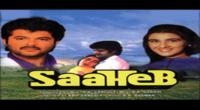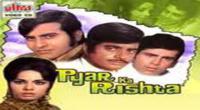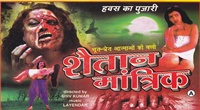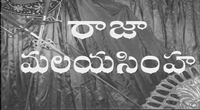| Hanuman Chalisa | |
|---|---|
 Hanuman singing bhajans | |
| Information | |
| Religion | Hinduism |
| Author | Tulsidas |
| Language | Awadhi dialect of Hindi |
| Verses | 40 |
The Hanuman Chalisa (Hindi pronunciation: ; literally Forty chaupais on Hanuman) is a Hindu devotional hymn (stotra) addressed to Lord Hanuman. It is traditionally believed to have been authored by 16th-century poet Tulsidas in the Awadhi language, and is his best known text apart from the Ramcharitmanas. The word "ch?l?s?" is derived from "ch?l?s", which means the number forty in Hindi, as the Hanuman Chalisa has 40 verses (excluding the couplets at the beginning and at the end). Hanuman Chalisa is a devotional hymn dedicated to Lord Hanuman.
Hanuman is a vanara (a monkey-like humanoid), a devotee of Ram, and one of the central characters in the Indian epic poem, the Ramayan. Lord Hanuman is also an incarnation of Lord Shiva. Folk tales acclaim the powers of Hanuman. The qualities of Hanuman – his strength, courage, wisdom, celibacy, devotion to Lord Rama and the many names by which he was known – are detailed in the Hanuman Chalisa. Recitation or chanting of the Hanuman Chalisa is a common religious practice. The Hanuman Chalisa is the most popular hymn in praise of Lord Hanuman, and is recited by millions of Hindus every day.
Contents
About the work
The authorship of the Hanuman Chalisa is attributed to Tulsidas, a poet-saint who lived in the 16th century CE. He says in the last stanza of the Chalisa that whoever chants it with full devotion to Hanuman, will have Hanuman's grace. Amongst the Hindus Worldwide, it is a very popular belief that chanting the Hanuman Chalisa invokes Hanuman's divine intervention in grave problems, including those concerning evil spirits.
Author
Tulsidas (1497/1532–1623) was a Hindu poet-saint, reformer and philosopher renowned for his devotion for Rama. A composer of several popular works, he is best known for being the author of the epic Ramcharitmanas, a retelling of the Ramayana in the vernacular Awadhi language. Tulsidas was acclaimed in his lifetime to be a reincarnation of Valmiki, the composer of the original Ramayan in Sanskrit. Tulsidas lived in the city of Varanasi until his death. The Tulsi Ghat in Varnasi is named after him. He founded the Sankat Mochan Hanuman Temple dedicated to Hanuman in Varanasi, believed to stand at the place where he had the sight of Hanuman. Tulsidas started the Ramlila plays, a folk-theatre adaption of the Ramayan. He has been acclaimed as one of the greatest poets in Hindi, Indian, and World literature. The impact of Tulsidas and his works on the art, culture and society in India is widespread and is seen to date in vernacular language, Ramlila plays, Hindustani classical music, popular music, and television series.
Language
There are 2 couplets in the beginning and one couplet at the ending between the 40 verses of Chalisa. The Chalisa details Hanuman in the order of his knowledge, devotion to Rama and man without any desire. As with the case of devotional literature, Tulsidas starts the poem with two couplets praising his Guru (teacher). The language of Chalisa is in the refined Awadhi language.
Deity
The Hindu deity to whom the prayer is addressed, Hanuman, is an ardent devotee of Ram (the seventh avatar of Vishnu) and a central character in the Ramayana. Lord Hanuman is also one of the powerful incarnation of Lord Shiva. A general among the vanars, Hanuman is a disciple of Lord Ram in the war against the demon king Ravan. Hanuman's exploits are much celebrated in a variety of religious and cultural traditions, particularly in Hinduism, to the extent that he is often the object of worship according to some bhakti traditions, and is the prime deity in many temples known as Hanuman Mandirs. He is one of seven chiranjeevs (immortals) as per sanatan Dharma. Hanuman also appears in Mahabharata on Arjuna's chariot as 'dhwaj' (a kind of flag).
Text
The work consists of forty-three verses – two introductory Dohas, forty Chaupais and one Doha in the end. The first introductory Doha begins with the word shr?, which refers to Sita, who is considered the Guru of Hanuman. The auspicious form, knowledge, virtues, powers and bravery of Hanuman are described in the first ten Chaupais. Chaupais eleven to twenty describe the acts of Hanuman in his service to Ram, with the eleventh to fifteenth Chaupais describing the role of Hanuman in bringing back Lakshman to consciousness. From the twenty-first Chaupai, Tulsidas describes the need of Hanuman's Kripa. At the end, Tulsidas hails Hanuman and requests him to reside in his heart and in the heart of Vaishnavs. The concluding Doha again requests Hanuman to reside in the heart, along with Ram, Lakshman and Sita.
The translation below follows the English and Hindi translations by Gita Press, Rao, Mehta and Rambhadracharya.
Introductory Dohas
Devanagari |
Hunterian |
Cleansing the mirror in the form of my mind with the pollen of the lotus-feet of the Guru, I describe the unblemished glory of Rama, which bestows the four fruits.
Gita Press translation interprets the four fruits as the four Puru??rthas – Dharma, Artha, K?ma, and Mok?a. Rambhadracharya comments that the four fruits refer to any of the following
Devanagari |
Hunterian |
Knowing my body to be devoid of intelligence, I remember Hanuman, the son of V?yu. Give me strength, intelligence and knowledge and remove all ailments (kalesa) and impurities (bik?ra).
Gita Press interprets kalesa as bodily ailments and bik?ra as mental maladies. Rambhadracharya comments that kalesa (Sanskrit kle?a) refers to the five afflictions (Avidy?, Asmit?, R?ga, Dve?a, and Abhinive?a) as described in the Yoga Sutras, and bik?ra (Sanskrit vik?ra) refers to the six impurities of the mind (K?ma, Krodha, Lobha, Moha, Mada, and M?tsarya). Rambhadracharya adds that these five afflictions and six impurities are the eleven enemies, and Hanuman is capable of removing them as he is the incarnation of the eleven Rudras.
The Chalisa
Devanagari |
Hunterian |
O Hanuman, the ocean of knowledge and virtues, may you be victorious. O the chief amongst Vanaras famous across the three Lokas (P?t?la, Prithvi (earth) and Svarga), may you be victorious.
Rambhadracharya comments that Hanuman is called ocean of knowledge by Tulsidas as the Valmiki Ramayana describes him as one who knows the three Vedas (?gveda, Yajurveda, and S?maveda) and Vy?kara?a.
Devanagari |
Hunterian |
You are the trusted messenger of Rama and you are the abode of incomparable strength. You are known by the names of Anjaniputra (son of Anjana) and Pavanasuta (son of V?yu).
Hanuman is called Anjaniputra as he was born from the womb of Anjana, who was an Apsara with the name Puñjikasthal? and was born as a Vanara by the curse of Agastya. Hanuman is called Pavanasuta since V?yu carried the divine power of Shiva into Anjana's womb, and since the Valmiki Ramayana calls Hanuman as V?yu's own son (m?rutasyaurasa? putra?).
Devanagari |
Hunterian |
You are the great hero, you are endowed with valour, your body is as strong as Indra's Vajra. You are the destroyer of vile intellect, and you are the companion of one whose intellect is pure.
Rambhadracharya explains the word bajarang? to come from Sanskrit Vajr??g? and gives two meanings of the word bikrama based on the root kram in Sanskrit and usage of the verb form vikramasva in Valmiki Ramayana –
- Hanuman is endowed with special progression of s?dhan? (penance).
- Hanuman is endowed with the special action of going over or across, i.e. the crossing of the ocean
Devanagari |
Hunterian |
Your complexion is that of molten gold, and you are resplendent in your handsome form. You wear Kundalas (small earrings worn in old times by Hindus) in your ears and your hair is curly.
Noting that in the Ramcharitmanas Tulsidas calls Hanuman as Sube?a (one with a handsome form), Rambhadracharya comments that this verse describes the form of Hanuman when he took the appearance of a Brahmin, which happens three times in the Ramcharitmanas.
Devanagari |
Hunterian |
You have the Vajra and the flag in your hands, and the sacred-thread (Yajnopavita) made of the Munja grass adorns your shoulder.
Rambhadracharya gives two meanings for the first half of the verse –
- The flag signifying the victory of Rama shines forth in Hanuman's Vajra-like powerful hand
- The Vajra-like powerful Gad? and the victory flag of Rama shine forth in Hanuman's hands
He also gives the variant reading chh?jai (????) instead of s?jai (????) in the second half.
Devanagari |
Hunterian |
O embodiment of Shiva (or son of V?yu carrying the p
Watch movie Hanuman Chalisa online on Amazon
Watch movie Hanuman Chalisa online
Watch The Movie On PrimeA Wednesday Full HD Movie Download

Silsila Hai Pyar Ka Full HD Movie Download

Saaheb Full HD Movie Download

Chandi Sona Full HD Movie Download

Dil Aur Mohabbat Full HD Movie Download

Pyar Ka Rishta Full HD Movie Download

Laawaris Full HD Movie Download

Aag Hi Aag Full HD Movie Download

Munimji (1955) Full HD Movie Download
.jpg)
Shaitan Mantrik Full HD Movie Download

Dil Pardesi Ho Gaya Full HD Movie Download

Aaj Ka Naya Kamina Full HD Movie Download

300 Full HD Movie Download

Rush Hour 3 Full HD Movie Download

Africa Screams Full HD Movie Download

No Full HD Movie Download

Rajamalaya Simham Full HD Movie Download

Awaaz Full HD Movie Download

Jhoom Barabar Jhoom Full HD Movie Download

Lamhe Full HD Movie Download

Vijay Full HD Movie Download

Download latest Movie from bollywood
- 1> baaghi 3
- 2> THE SKY IS PINK MOVIE FULL STORY AND REVIEW
- 3> Luka Chuppi
- 4> TO ALL THE BOYS I’VE LOVED BEFORE
- 5> Kabir Singh
- 6> Street Dancer 3D
- 7> Simmba
- 8> Gone Girl
- 9> The Girl Who Lived
- 10> Ludo
- 11> DILWALE DULHANIA LE JAYENGE
- 12> GUILTY
- 13> The Godfather
- 14> Adventures of Rusty
- 15> Sooryavanshi
- 16> Satyameva Jayate 2
- 17> Thappad
- 18> Bhool Bhulaiyaa 2
- 19> KGFChapter 2
- 20> Mardaani 2
- 21> Pinjar
- 22> Shivaji maharaj
- 23> Ek Villian 2
- 24> Hungama 2
- 25> Divergent
- 26> Mumbai Saga
- 27> The Internship
- 28> HIT (telugu)
- 29> Panga
- 30> The perfect date
- 31> 16 December
- 32> Gopala Gopala (Telugu)
- 33> Brahmastra
- 34> Gangubai Kathiawadi
- 35> Manmadhudu
- 36> Nenu local
- 37> Mahanati
- 38> Shatamanam bavathi
- 39> Lagaan
- 40> After
- 41> MOM
- 42> Shamshera
- 43> Raguvaran BTech
- 44> Khakee
- 45> The villain
- 46> OM
- 47> Mr. perfect
- 48> Bueatifull mind
- 49> Hichki
- 50> Gabbar Singh
- 51> Jogi
- 52> Before Sunrise
- 53> Before Sunset
- 54> Before Midnight
- 55> The Big Bull
- 56> Top Gun: Maverick
- 57> The Purge
- 58> The Sky is Pink
- 59> Laxmmi Bomb
- 60> Sadak 2
- 61> Sufna
- 62> Prithviraj
- 63> PK
- 64> Coolie No 1(2020)
- 65> Black Widow
- 66> Dear Zindagi
- 67> Dil Bechara
- 68> PHIR HERA PHERI
- 69> WAR
- 70> Dostana
- 71> RRR: Roudram Ranam Rudhiram
- 72> Maidan
- 73> Dabbang 3
- 74> Chhalaang
- 75> life as we know it
- 76> SherShaah
- 77> Sandeep Aur Pinky Faraar
- 78> Event Horizon
- 79> 83
- 80> Radhe: Your Most Wanted Bhai
- 81> Gunjan Saxena: The Kargil Girl
- 82> Mr India
- 83> Vivah
- 84> Anokha Bandhan
- 85> Ghost
- 86> Bhoot: Part One - The Haunted Ship
- 87> Haseen Dilruba
- 88> Laal Singh Chaddha
- 89> Qismat
- 90> Rajput
- 91> Drive
- 92> Dil Chahta Hai
- 93> Dil Ki Baazi
- 94> Dil Ka Rishta
- 95> Teesri Manzil
- 96> Dil
- 97> Love Aaj Kal
- 98> Khaali Peeli
- 99> Bunty Aur Babli 2
- 100> Atrangi Re
- 101> Gulabo Sitabo
- 102> Jodi
- 103> Suraj Pe Mangal Bhari
- 104> Deewana
- 105> Attack
- 106> Sardar Udham Singh
- 107> Toofan
- 108> THE LOVEBIRDS
- 109> Jersey
- 110> Ginny Weds Sunny
- 111> Thalaivi
- 112> Shiddat
- 113> Angels vs Zombies
- 114> Koi Mil Gya
- 115> Thank God
- 116> Bhuj: The Pride of India
- 117> Hum Aapke Hain Kaun
- 118> The Platform
- 119> Bird Box
- 120> Roohi Afzana
- 121> Torbaaz
- 122> Nikamma
- 123> World War Z
- 124> Extraction
- 125> Train to Busan
- 126> Life of Pi
- 127> SHAADI MEIN JROOR AANA
- 128> Himmat Aur Mehnat
- 129> To All The Boys: P.S. I Still Love You
- 130> Mimi
- 131> Good Newwz
- 132> Shubh Mangal Zyada Saavdhan
- 133> Raabta
- 134> Harry Potter and the Philosopher's Stone
- 135> Harry Potter and the Chamber of Secrets
- 136> Chhapaak
- 137> War of the Worlds
- 138> Harry Potter and the Prisoner of Azkaban
- 139> Harry Potter and the Goblet of Fire
- 140> MURDER MYSTERY
- 141> Shakuntala Devi
- 142> Bachchan Pandey
- 143> Jayeshbhai Jordar
- 144> Sheer Qorma
- 145> Saina
- 146> 'O' Pushpa I hate tears
- 147> Kedarnath
- 148> MS Dhoni The Untold Story
- 149> Chhichhore
- 150> Badhaai Ho
- 151> Unstoppable
- 152> Oz the Great And Powerful
- 153> The Girl on the Train
- 154> Haathi Mere Saathi 2020
- 155> The Conjuring: The Devil Made Me Do It
- 156> Gandhi Se Pehle Gandhi
- 157> The Song of Scorpions
- 158> Srimanthudu
- 159> Hello Guru Prema Kosame
- 160> Beauty and The Beast
- 161> Black Panther
- 162> Charlie and the Chocolate Factory
- 163> Bole Chudiyan
- 164> Fidaa
- 165> Duvvada Jagannadham
- 166> Bruce Lee: The Fighter
- 167> Hyper
- 168> Yaara
- 169> Red (2020)
- 170> Shivam
- 171> That Is Mahalakshmi
- 172> Nishabdham
- 173> Aashram 2020 web series
- 174> Laxmii
- 175> Mismatched
- 176> STUDENT OF THE YEAR 2
- 177> NAIL POLISH
- 178> Ramprasad Ki Tehrvi
- 179> KAAGAZ
- 180> 12 o Clock
- 181> The Power
- 182> bolo hau
- 183> Tribhanga
- 184> JAMUN
- 185> Madam Chief Minister
- 186> Maasaab
- 187> Aadhaar
- 188> Tanhaji
- 189> Bhaagi 3
- 190> Bhootnath
- 191> MALANG
- 192> Jai Mummy Di
- 193> Haathi Mere Saathi 2021
- 194> Shakeela
- 195> Unpaused
- 196> Annayya
- 197> Vamsoddharakudu
- 198> Mrugaraju
- 199> Narasimha Naidu
- 200> Sankranti
- 201> Manasu Maata Vinadhu
- 202> Anjaane
- 203> Apaharan
- 204> Bachke Rehna Re Baba
- 205> Bewafaa
- 206> Roohi
- 207> Radhe
- 208> Zindagi Khoobsoorat Hai
- 209> Yeh Mohabbat Hai
- 210> Yeh Kya Ho Raha Hai?
- 211> The Tomorrow War
- 212> DehradunDiary
- 213> Meri Shaadi Karaoo
- 214> Matruu Ki Bijlee Ka Mandola
- 215> No One Killed Jesica
- 216> Aag Ka Goola
- 217> Eight Million Dollars
- 218> Three Hundred
- 219> Cats and Dog
- 220> Decoy
- 221> Gold Rush
- 222> You Have Got Mail
- 223> Final Destination three
- 224> Tofan
- 225> Jungle
